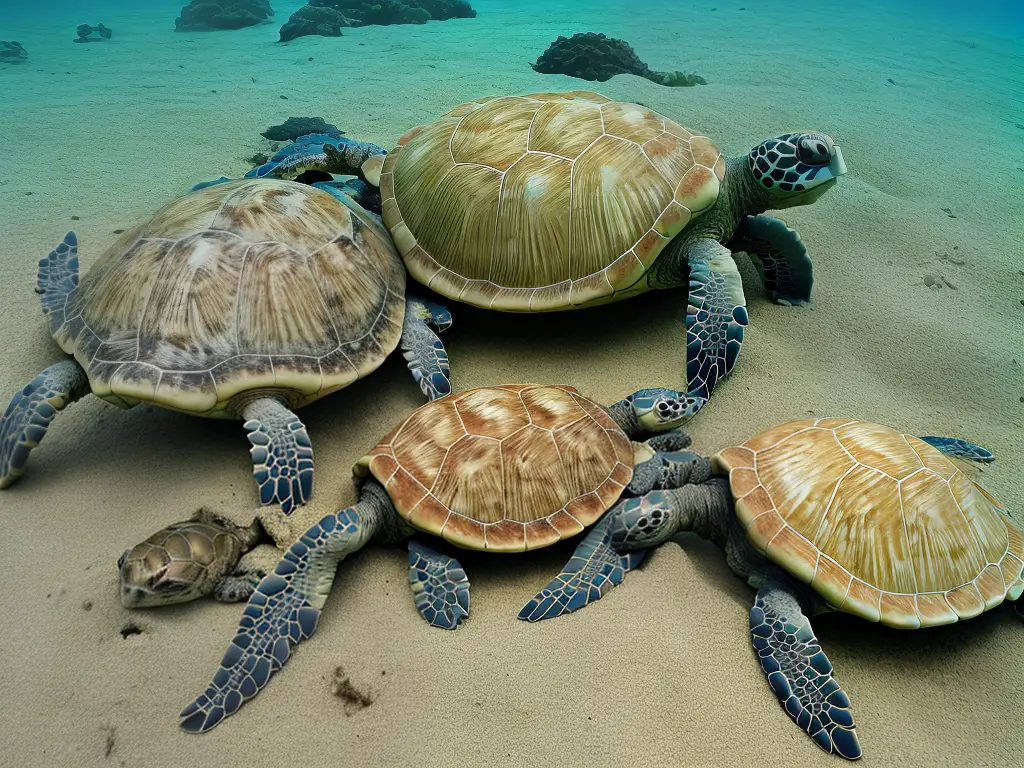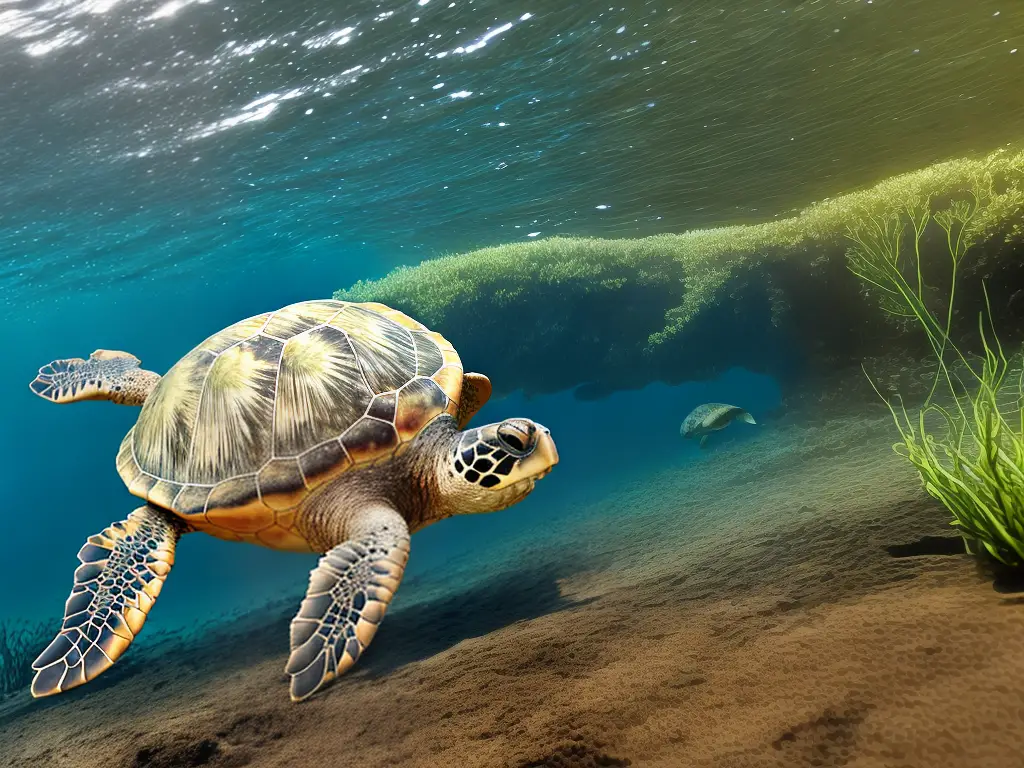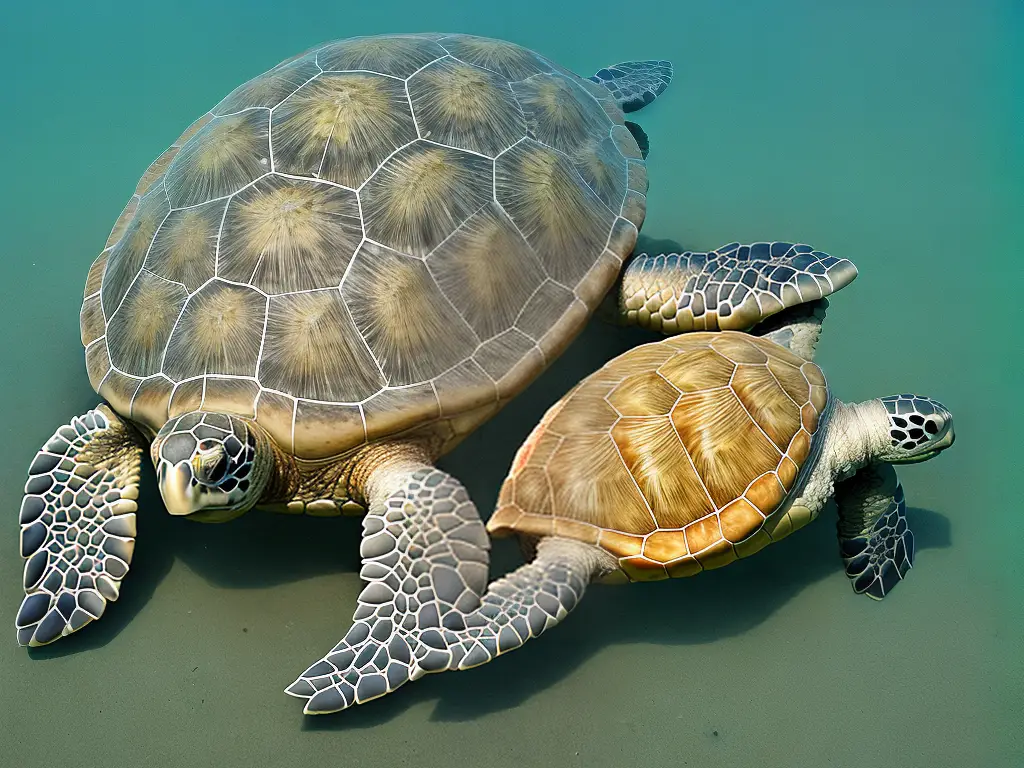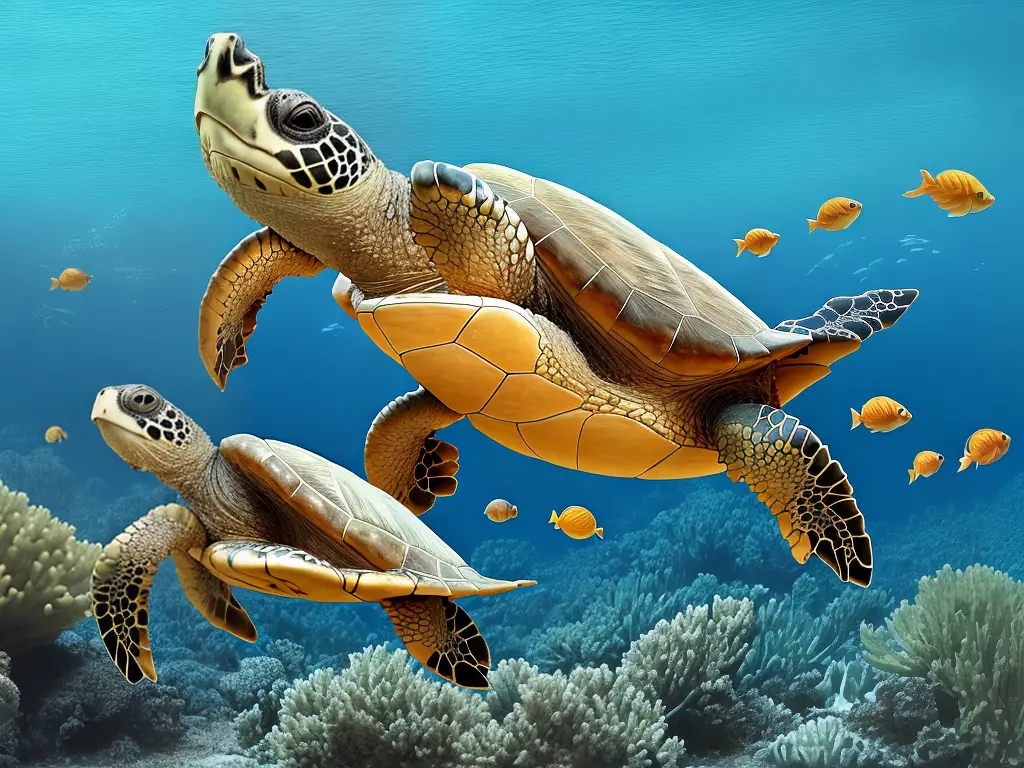Introduction
Swimming through the ocean, turtles are known and loved for their grace and unique patterns of swimming. Do you want to learn about turtle swim patterns in a fun and easy way? Then you’re in the right place! In this article, we will explore the amazing world of turtle swimming, their preferred swimming habitats, and the amazing adaptations that enable these fascinating creatures to thrive in various environments. Let’s dive in!

Types of Turtles and Their Swim Patterns
There are various types of turtles, including sea turtles, freshwater turtles, and land turtles. Each has its own unique swim patterns and characteristics. Let’s learn about some popular types of turtles and how they swim.
- Sea Turtles: Sea turtles are powerful swimmers, built for long ocean journeys. Their forelimbs are shaped like flippers, enabling them to push through the water with ease. They use their hind limbs for steering. These amazing creatures can dive deep and swim at impressive speeds!
- Freshwater Turtles: Freshwater turtles, like pond turtles and river turtles, have webbed feet with claws. They paddle through the water, using their legs like oars, and even swim through the air by extending their limbs! Freshwater turtles are slower swimmers than sea turtles but are still quite agile in the water.
- Land Turtles: They are often called tortoises, and although they are not built for swimming, they can still move through water, albeit slowly. Tortoises use their webbed feet to paddle gently, with their limbs held close to their bodies, covering their eyes for protection when they swim.

Preferred Habitats and Swimming Behaviors
Turtles, depending on their type, prefer different habitats and exhibit different swimming behaviors. Let’s dive deeper into the preferred habitats and swimming behaviors of these fascinating creatures!
- Sea Turtles: As ocean dwellers, sea turtles prefer warm, tropical waters. Some species, like the leatherback turtle, also venture into colder waters in search of food. Sea turtles are known to migrate long distances, and their powerful, streamlined bodies help them navigate through the currents.
- Freshwater Turtles: Freshwater turtles can be found in ponds, lakes, rivers, and even swamps. They prefer still or slow-moving water and enjoy swimming just below the surface, among aquatic plants, and near the shore. Freshwater turtles are more comfortable swimming in shallow water, where they can easily retreat to safety or bask in the sun.
- Land Turtles: Land turtles or tortoises stay mainly on land, but are often found near water sources. They can swim in shallow water to cool off, drink, or escape from predators. Though they are slow in the water, their tough shells and strong legs allow them to survive on land.

Adaptations for Swimming
Turtles have some amazing adaptations that allow them to swim efficiently and effectively. Want to learn more about some of these fantastic adaptations? Let’s check them out!
- Shell Shape: A turtle’s shell plays an important role in determining its swim pattern. Sea turtles have a streamlined, flat shell, which reduces drag in the water and allows them to glide swiftly. Freshwater turtles have a more elevated shell, which is better suited to shallower water where they can easily hide and maneuver.
- Limb Structure: Sea turtles have long, paddle-like flippers, perfect for propelling through the water. Freshwater turtles have webbed feet with claws, which assist in paddling, digging, and climbing. Land turtles have strong, sturdy feet that help them navigate uneven terrain.
- Lung Capacity: Turtles possess a remarkable ability to hold their breath underwater. Sea turtles can stay submerged for hours, while freshwater turtles can stay underwater for around 30 minutes. This adaptation allows them to search for food and evade predators without coming up for air.

Conclusion
Turtles are truly fascinating creatures, with their unique swim patterns and amazing adaptations. They are found in various habitats and showcase incredible diversity in swimming skills and behavior. We hope you enjoyed learning about the wonderful world of turtle swimming as much as we enjoyed explaining it. The next time you spot a turtle swimming gracefully in the water, remember the incredible journey they’ve taken to adapt and thrive in their environment.












